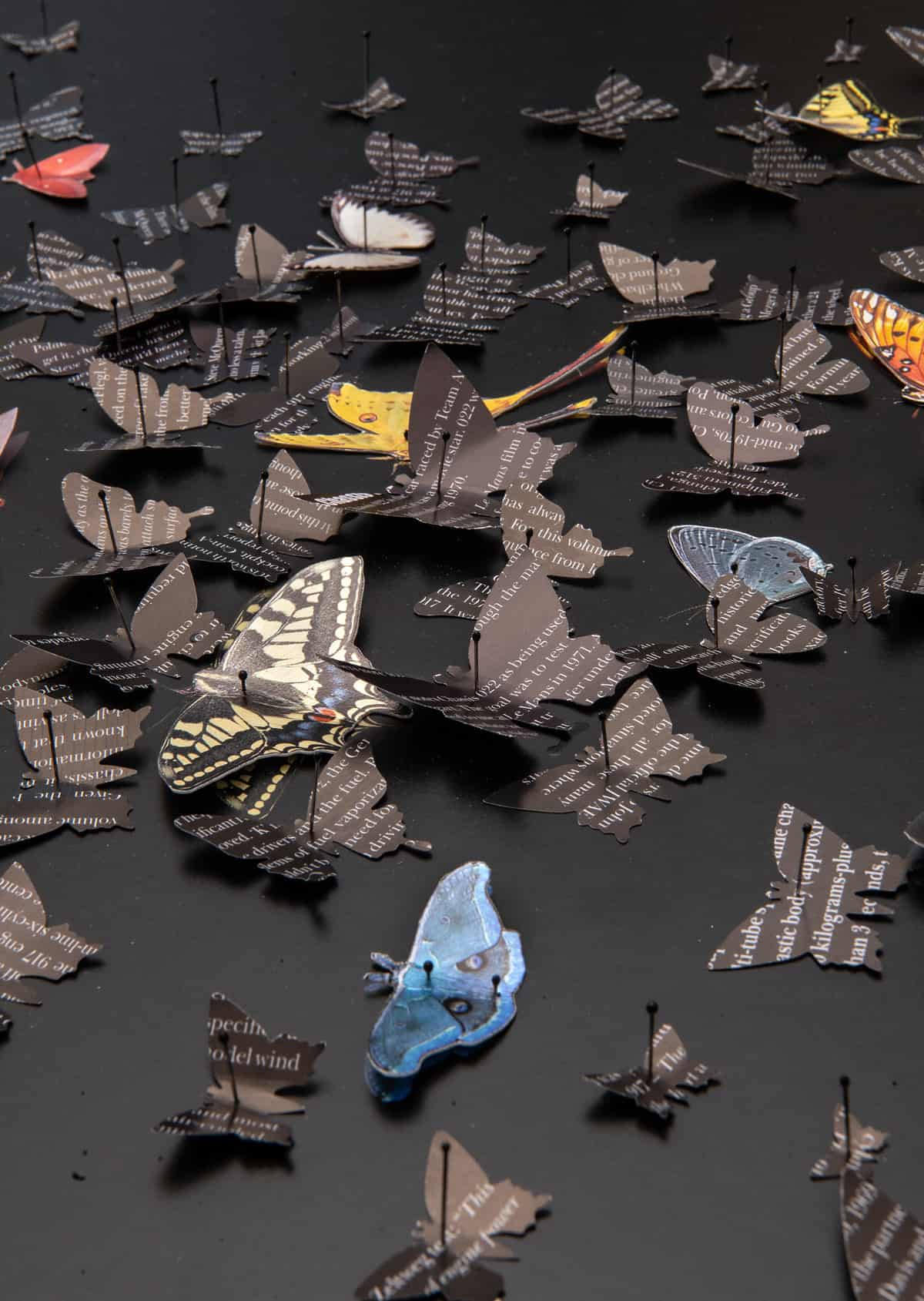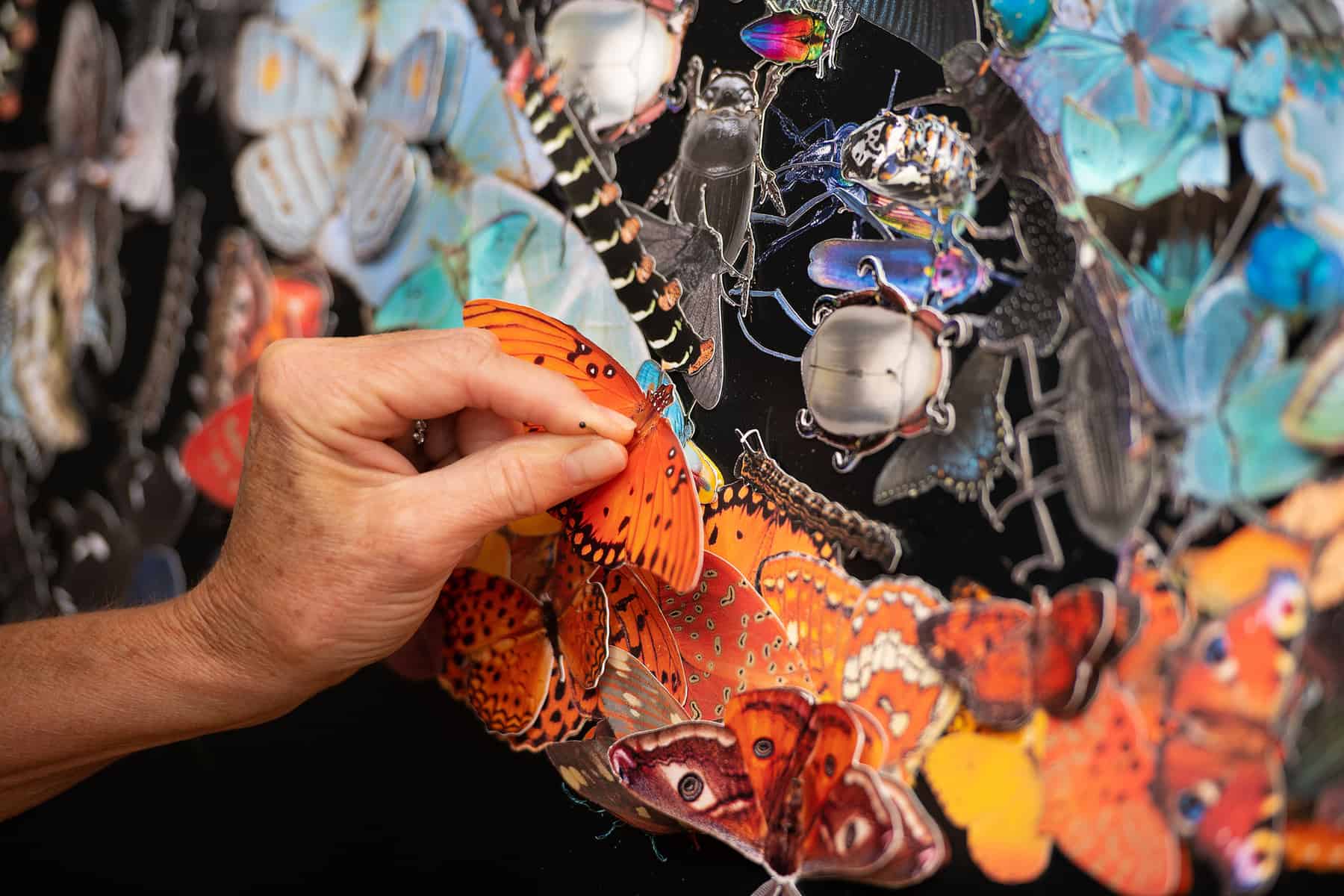“Aerodynamics by Entomology”
Artist Heidi Mraz unveils a new work crafted from butterflies to portray the metamorphosis of Porsche’s 917 from an unstable monster to an immortal race car
BY: THE EDITORS
Several years ago, Heidi Mraz, an artist and documentarian dedicated to preserving and uncovering automotive history, heard the extraordinary but still obscure anecdote behind the creation of the legendary Porsche 917.
Inspired by this important moment in Porsche’s past, she began to ideate on how to tell this story using her art as a vehicle. The result is “Aerodynamics by Entomology”, a vibrant, multi-layer piece of art.
In 1969, following a lethal crash at Le Mans, Porsche’s engineers and Works drivers took the dangerously unstable 917 out to the Osterreichring racetrack in Austria to see if they could determine why it tended to lift off the track at high speed. Author Jay Gillotti stated in his book, Gulf 917, “In hindsight, the handling problems that the drivers initially complained about with the 917 can be seen as rooted in the aerodynamics. It is also important to remember that aerodynamics for racing cars was still something of a black art in 1969. Formula 1 cars had only just sprouted primitive wings and ground-effect tunnels were still years away.”
When the car returned to the pit, Porsche’s JWAE team manager and engineer, John Horsman, noticed dead gnats covering the car except on the rear spoilers. Horsman realized that this meant there was little or no airflow to the tail and therefore insufficient downforce to keep the car on the track at speed. Horsman quickly modified the car with aluminum sheets and duct tape and, on the next test drive, the Works driver was able to race around the circuit at record speed while keeping the 917 on the asphalt. Driver Brian Redman was thrilled with the modifications and famously proclaimed, “Now it’s a racing car!” Porsche’s 917 would go on to become the overall winner at Le Mans in 1970 and 1971 and continues to be celebrated as one of the greatest racing legends of all time, despite a racing career cut short due to evolving FIA regulations.
“The little-known account of John Horsman’s epiphany and how he modified the 917 inspired me on so many levels that I felt the need to share the story through my art.” says Heidi Mraz. “Using butterflies as the medium was a natural choice. Symbolically, butterflies draw a variety of parallels to the 917’s story. They are an insect like the dead gnats that covered the car; both the 917 and the butterfly are lightweight, and each needed to undergo a metamorphosis in order to mature. Both are also symbols of immortality despite having short life cycles.”
“Aerodynamics by Entomology” is a spectacular assemblage portrait of one of the greatest Porsche 917Ks – Chassis 917-022 – which entered Hollywood stardom after its debut in the movie, Le Mans, starring Steve McQueen. Mraz’s extraordinary piece of art is made from approximately one thousand paper butterflies and other insects that match the iconic Gulf car’s blue and orange racing livery. Hand-cut, placed and pinned, the butterflies add poignant dimension and the illusion of movement to the artistic portrayal of the 917.
Mraz selected chassis 917-022 for the portrait because of its iconic status, plus she had the opportunity to view the car in person when it took part of the featured class of thirteen Porsche 917s at the 70th Annual Pebble Beach Concours d’Elegance. The rare gathering allowed her the unique chance to collect more primary source information about the race cars. Mraz then committed to creating an additional entomology-inspired piece, the 917 Specimen Box, that highlights each of the 917s with butterfly shaped cut-outs created from photos gathered on the lawn at Pebble Beach.
Unveiled this week at the artist’s studio in Great Falls, Virginia, “Aerodynamics by Entomology” is available for viewing by appointment.







